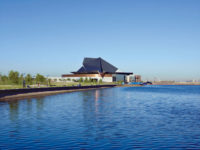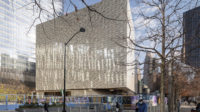Ambitious plans for a new concert hall are well under way in Orlando, Florida. In conjunction with HKS Architects and local firm Baker Barrios Architects, Los Angeles-based Barton Myers Associates (BMA) has been selected to design the Dr. Phillips Center for the Performing Arts (DPAC), for which groundbreaking is scheduled for this fall.
Click on the slide show icon to see additional photos.
BMA is well known for its bold performing arts centers, like Arizona’s Tempe Center for the Arts, a 90,000-square-foot building with a soaring, origami roof [RECORD, January 2008, page 108]. At a projected 330,000 square feet, DPAC is Tempe’s much more expansive, if quieter, cousin.
The first phase of the $250 million project will include construction of a 2,700-seat concert hall, a smaller 300-seat studio theater for community arts groups, and nearly 10,000 square feet of additional educational, multipurpose space.
A third, 1,700-seat venue, slated for construction under the second and final phase of development, will be the new permanent home of the Orlando Ballet, the Orlando Philharmonic, and the Orlando Opera Company. This multiform theater, says Ryan Ihly, AIA, a senior associate at BMA, is “really the gem [of the center]” and will “put Orlando on the map in terms of innovation.” The venue’s stage consists of a flexible, mechanized shell that can be configured to suit the specific acoustical needs of each performance. Unlike other such shells, however, BMA’s effort at DPAC will be a seamless insertion into the space, rather than a simple partition.
Ihly cites support from the Orlando community and philanthropic efforts on behalf of the Orlando Performing Arts Center Corporation as major sources of enthusiasm—and funding—for the project. BMA, Ihly notes, placed a great deal of importance on creating a venue for the community, rather than for tourism alone. To prevent the complex from going unused during the day, a 1.5-acre public plaza in front of the center will provide an outdoor performance area and congregational space for up to 3,000.
It’s no surprise, then, that BMA names London’s famed Trafalgar Square as a source of inspiration for the project. When the center is finished, BMA hopes that DPAC, too, will be a locus of the arts, civic life, and tourism in Orlando. The project is scheduled for completion in 2013.





